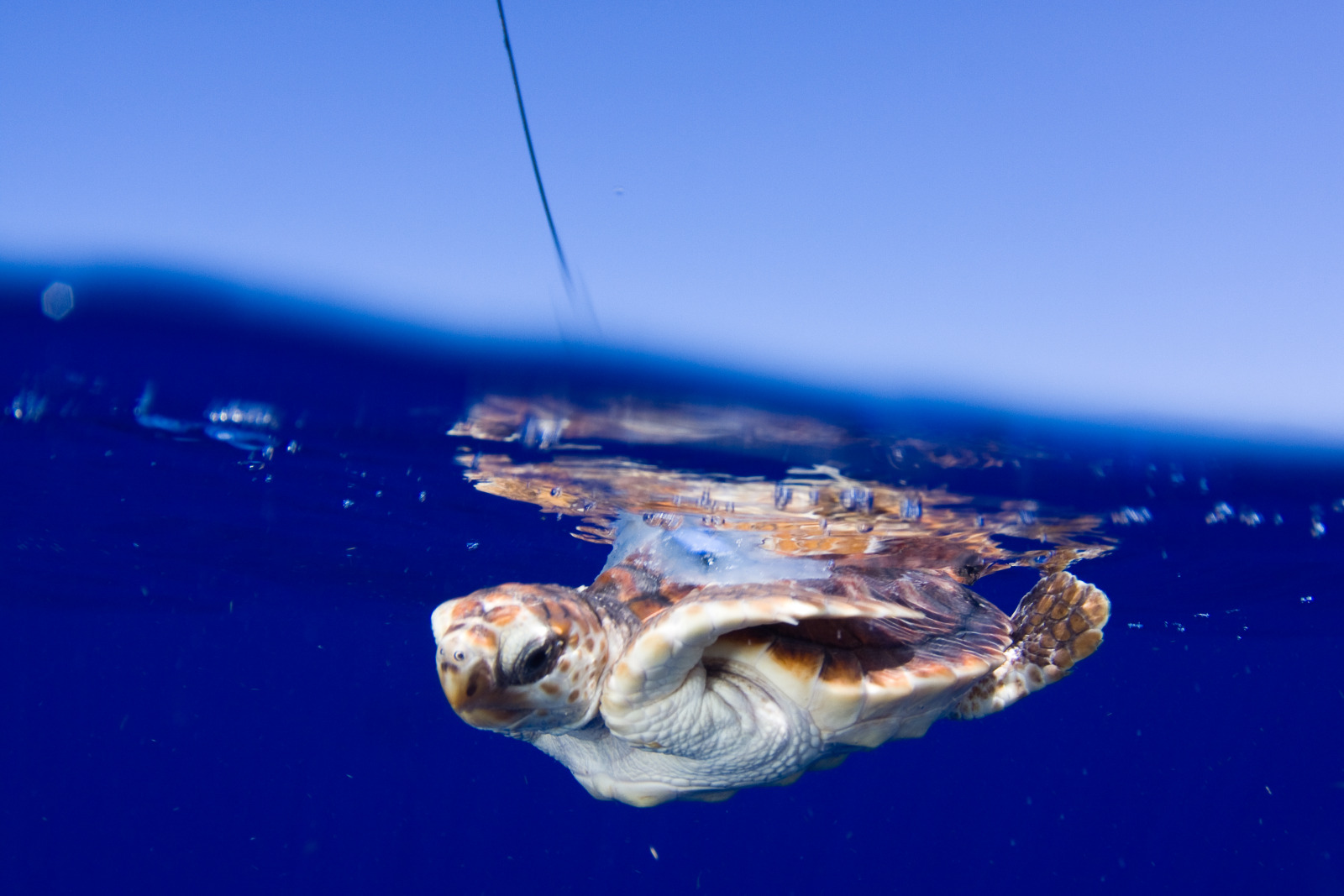Where baby sea turtles go during their first formative years out at sea has finally been revealed, solving a mystery that has been frustrating marine biologists for over 50 years.
marine biologists for over 50 years.
Measuring just 5 centimetres long, freshly-hatched baby turtles toddle down to the ocean toand disappear into the surf. They're not seen again until several years later, when they re-emerge, now dinner-plate sized, in coastal areas.
But what happens during these 'lost years' wasn't known.
The obvious solution is some sort of tracking system. But, as University of Central Florida scientist Kate Mansfield, who led the study, explains, this is a tricky. "[A tag that] stays on a larger turtle for up to 4 years these little guys would shed in 1-2 weeks; so we had to come up with something that was a little bit different".
But, since turtles' shells are made of keratin, the same as our finger nails, the research team sought the advice of professional manicurists.
Using the same acrylic base that keeps false nails in place, the team were able to attach small solar-powered satellite tags to the turtles' backs. "We created a flexible attachment that would allow for about 2-5cm of shell growth," Mansfield explains.
Publishing their findings in the Proceedings of the Royal Society B, the researchers have now charted, over a 220-day period, the travels of 17 baby loggerhead turtles after they entered the ocean from the Florida coastline.
The team were surprised that the young turtles took a much more varied route than they had assumed they would. Previously, scientists thought that turtles only travelled through the outer edges of what are known as the Gyre currents, making a big ring around the North Atlantic Ocean before returning to the coastal areas.
But some of the individuals they studied made their way right into the centre of this 'ring route', revealing a much wider range of the travelling turtles and showing that often they do not not take the quickest or most direct passage to known oceanic developmental habitats.
Young sea turtles are known to hide in floating clumps of Sargassum seaweed. The seaweed is used as a raft and is assumed to provide shelter from predators.
While in the Sargassam, turtles were recorded to have higher than expected temperatures. The group now propose that there is also a thermal reward that comes with hitching a ride inside the seaweed.
As the loggerhead turtle is an endangered species, as are all sea turtles, it is important to gather information about all stages of its life cycle and habitat in order to effectively protect it.
This study is the first to show the areas inhabited by such young turtles, which can disappear for decades. According to Mansfield, "I think that we will start seeing turtles in some areas where we wouldn't necessarily expect them".
- Previous Liver from skin
- Next Smoking versus sausages?










Comments
Add a comment